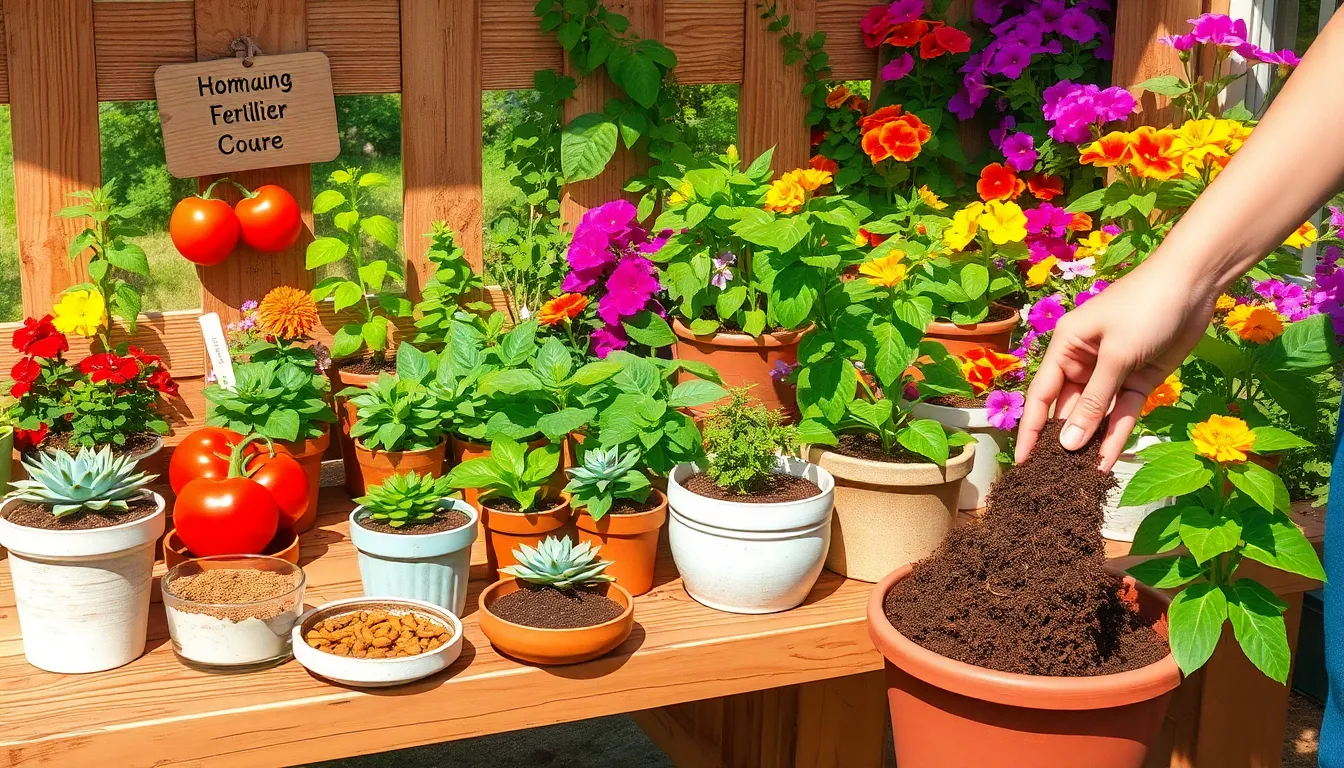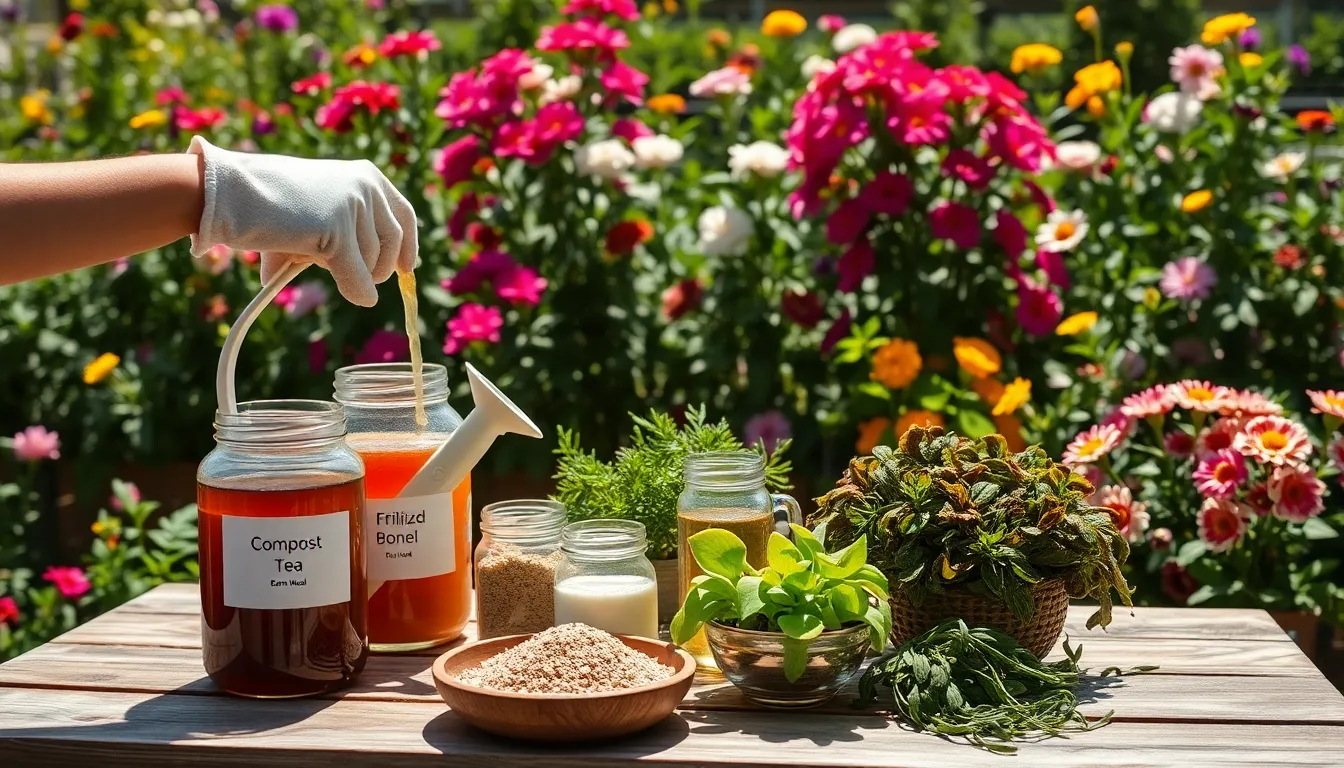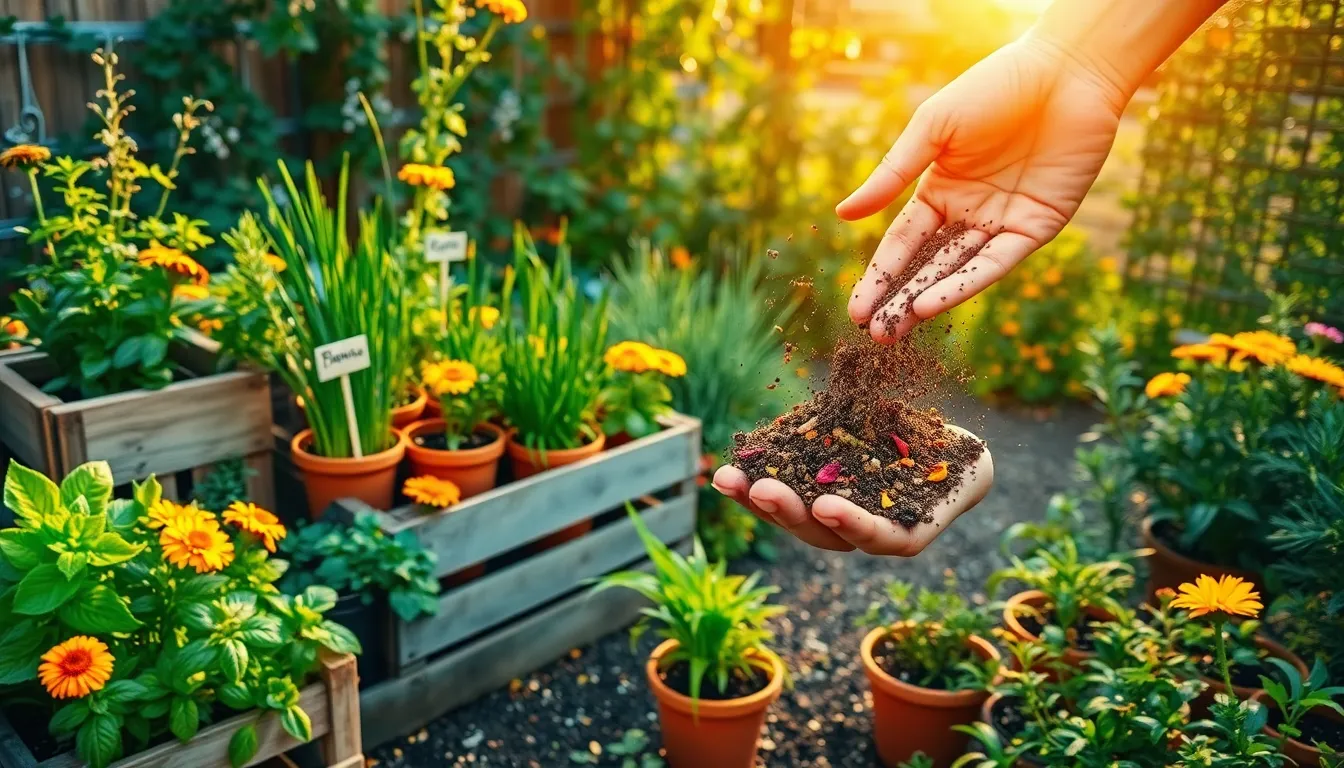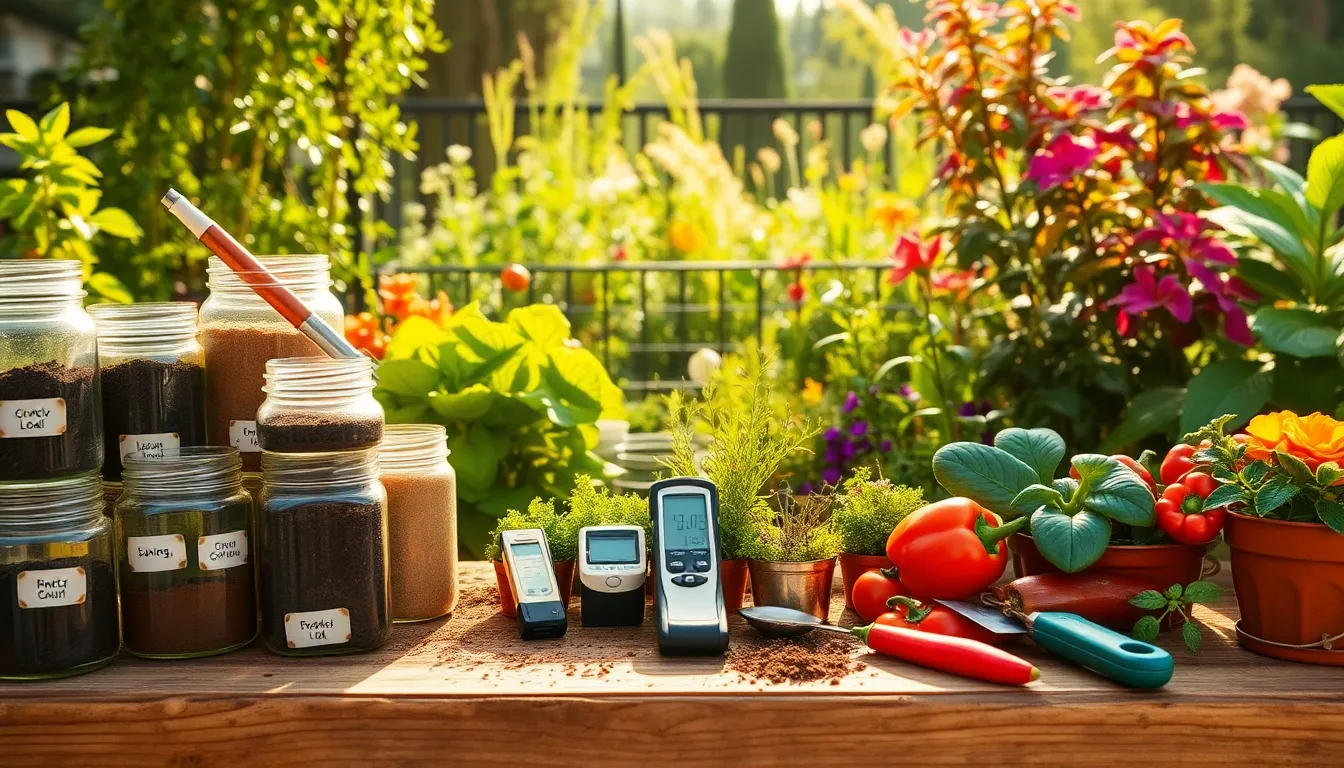In the vibrant world of gardening, nurturing your plants with organic fertilizers is like giving them a gourmet meal tailored just for their growth. Whether you’re just starting with your first potted plant or you’ve cultivated a sprawling garden, understanding how to fertilize organically can transform your plants into lush, thriving specimens. Organic fertilization not only enhances the vitality of your plants but also contributes to the health of the soil and the broader ecosystem, creating a more sustainable and rewarding gardening practice.
As you delve into the world of organic fertilizers, you’ll uncover the secrets of harnessing natural ingredients to boost plant health and productivity. This guide will walk you through the essential steps to create and apply organic fertilizers, providing insights that cater to both the novice and the seasoned gardener. You’ll learn how to identify the nutritional needs of your plants, select the right organic materials, and apply them efficiently to ensure your garden flourishes with minimal environmental impact. Embrace the journey of organic gardening and discover how small changes in your fertilization routine can lead to a bountiful, vibrant garden that reflects your dedication and care.
Assess Soil Nutrient Needs
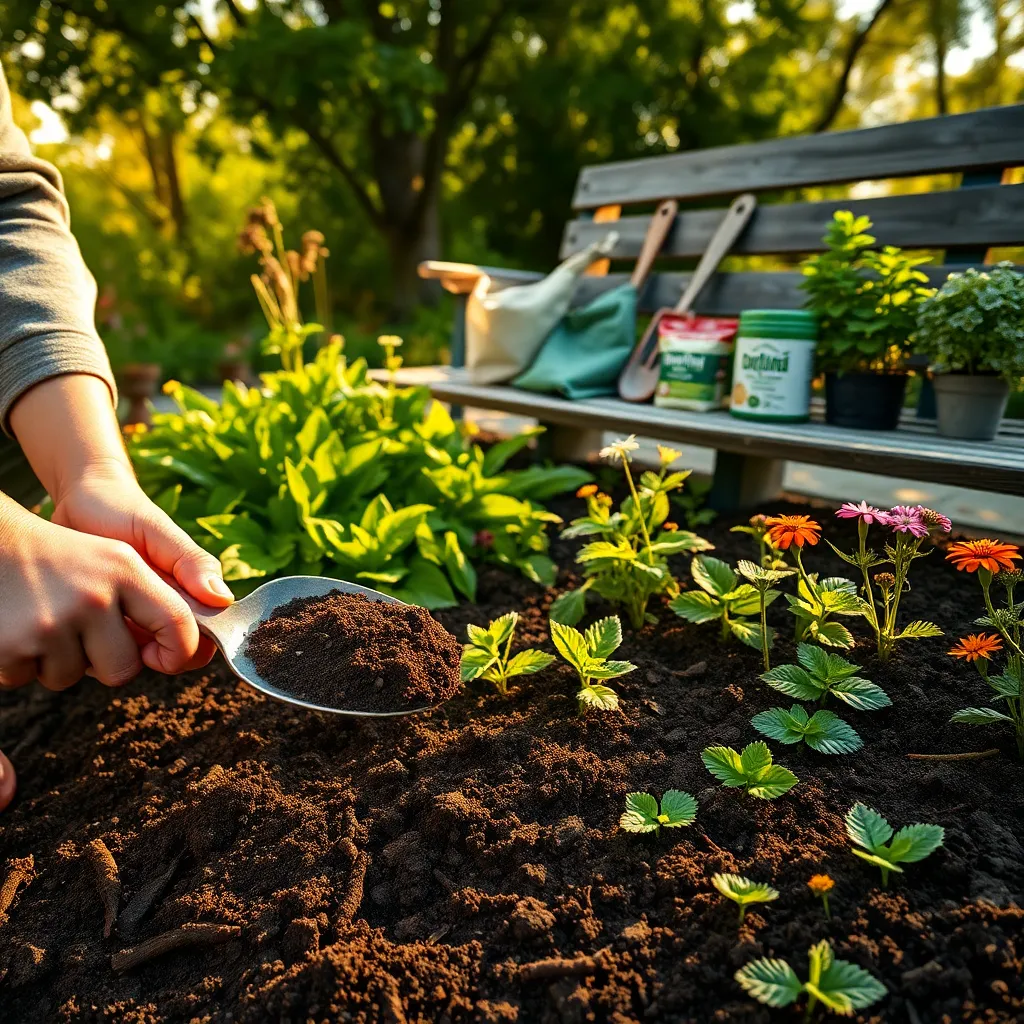
Understanding your soil’s nutrient profile is crucial for successful organic gardening. Begin by conducting a soil test to determine the levels of essential nutrients such as nitrogen, phosphorus, and potassium.
These tests can be done using home kits or by sending samples to a local extension service. Once you have the results, tailor your fertilization approach to address any deficiencies or surpluses.
For beginners, focus on the three main nutrients, but also be aware of secondary nutrients like calcium and magnesium. Experienced gardeners might consider the pH level, which affects nutrient availability, and adjust it by adding lime to raise pH or sulfur to lower it.
Utilize organic materials like compost, well-rotted manure, or specific plant-based fertilizers tailored to your soil’s needs. For sandy soils, which drain quickly, consider adding more organic matter to help retain moisture and nutrients.
Select Organic Fertilizer Types
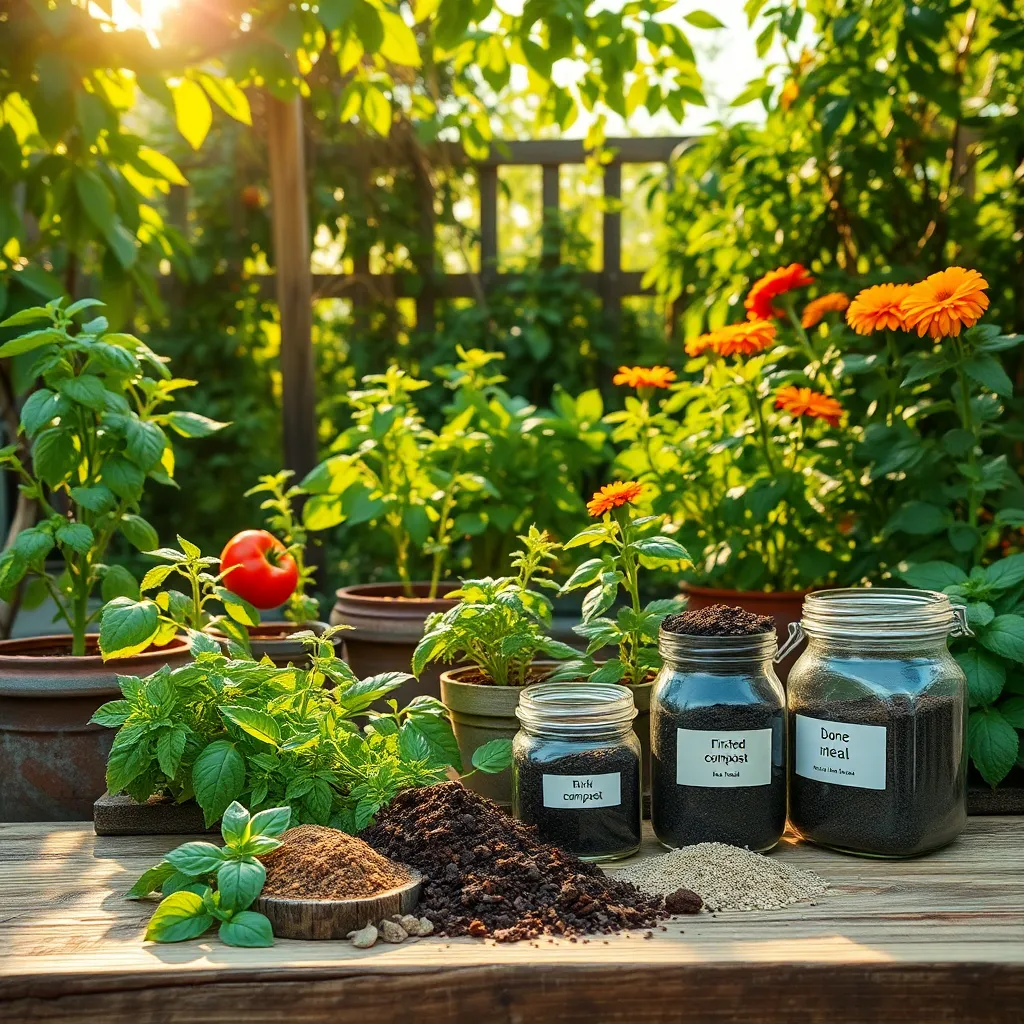
Choosing the right organic fertilizer is crucial for maintaining healthy plant growth. Compost is a versatile option that enriches the soil with nutrients and improves its texture, making it ideal for a variety of plants. Beginners will appreciate its simplicity: simply mix it into the top layer of soil. For those looking to boost their garden’s productivity, consider using compost tea as a liquid feed, which delivers nutrients directly to the plant roots.
Another excellent choice is manure, which provides a rich source of nitrogen and other essential nutrients. It’s important to use well-rotted manure to prevent burning your plants and to apply it several weeks before planting. If your soil is sandy or nutrient-poor, integrating manure can significantly improve its fertility. Advanced gardeners might explore vermicompost, a type of compost created by worms that is especially beneficial for vegetable gardens.
For those interested in boosting soil minerals, rock phosphate and greensand are valuable additions. Rock phosphate supplies phosphorus, crucial for root development and flowering, while greensand enhances potassium levels, promoting strong stems and vibrant blooms. Both amendments should be worked into the soil prior to planting for best results. As a tip, combine these with other organic fertilizers to create a balanced nutrient mix tailored to your garden’s needs.
Lastly, don’t overlook the power of seaweed extract, which is an excellent source of trace minerals and plant growth hormones. This liquid fertilizer can be applied as a foliar spray or soil drench, providing a quick nutrient boost. Seaweed is particularly beneficial for seedlings and transplants, helping them establish more quickly. For a sustainable approach, consider harvesting seaweed from local beaches, if available, ensuring you follow local regulations.
Apply Fertilizer Evenly
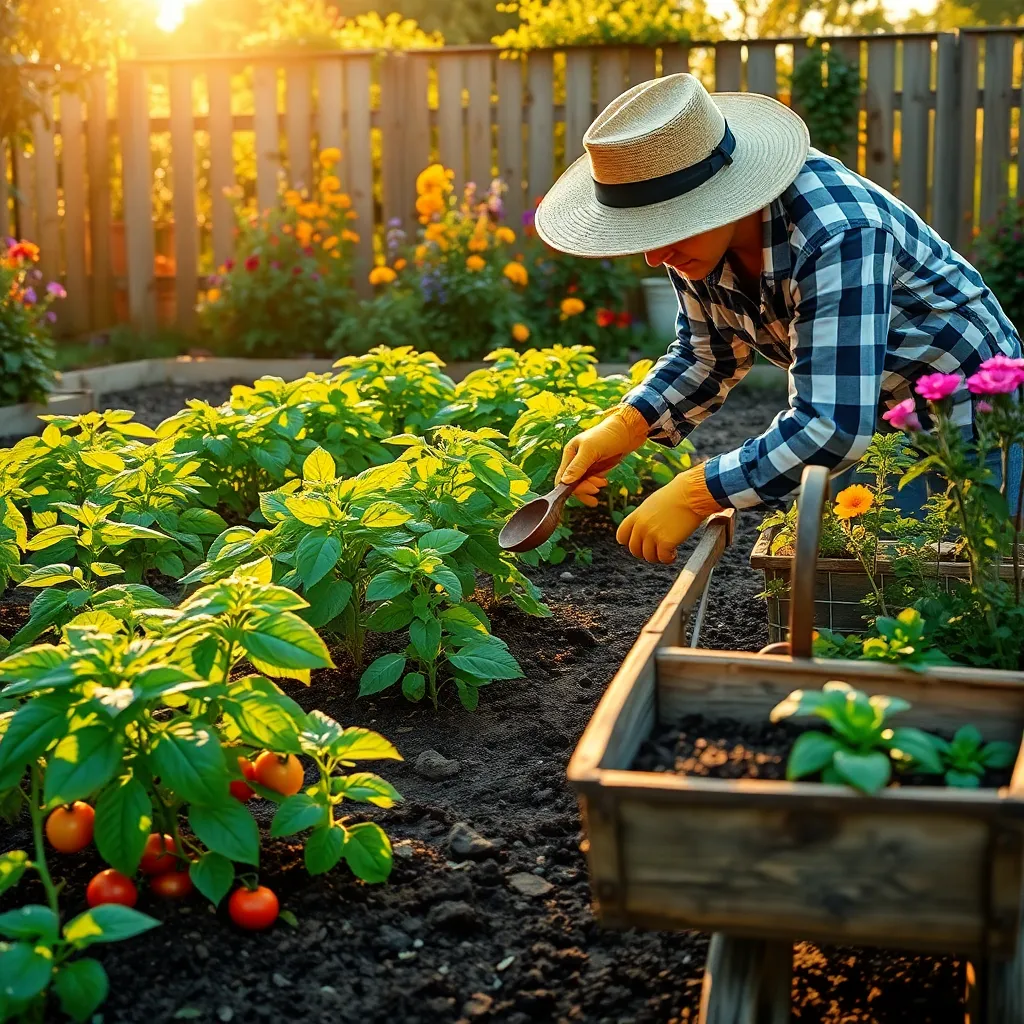
Distributing organic fertilizer evenly across your garden is crucial for balanced plant growth. Start by dividing your total fertilizer amount into smaller, manageable portions to ensure even coverage.
When applying fertilizer, use a broadcast spreader for larger garden areas to maintain consistency. For smaller plots or potted plants, a hand-held spreader or by-hand method can be effective.
Always apply fertilizer on a calm, windless day to prevent uneven distribution due to wind drift. This simple step ensures that every plant receives the nutrients it needs without waste.
After spreading, gently rake the soil to incorporate the fertilizer into the top layer, aiding in nutrient absorption. This technique also helps prevent runoff, which can occur during watering or rainfall.
Incorporate Fertilizer into Soil
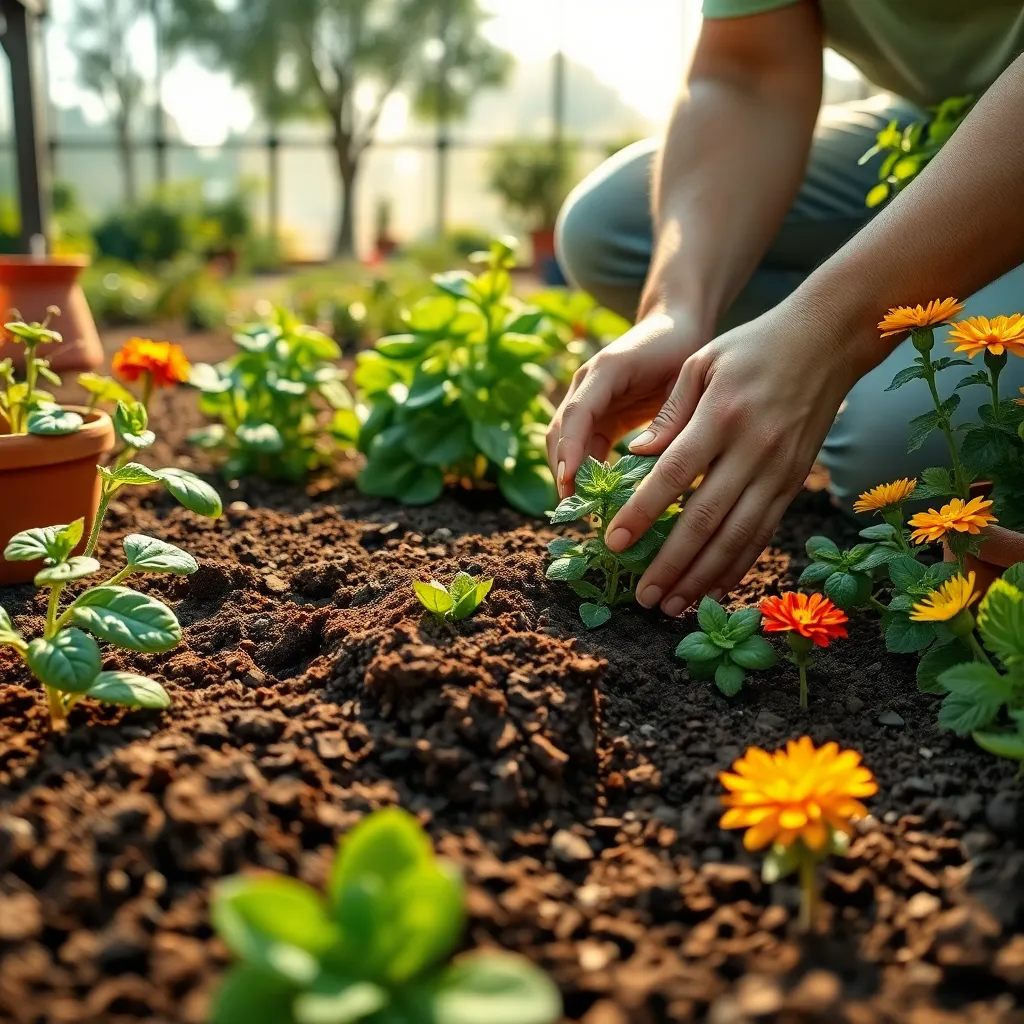
To effectively incorporate fertilizer into the soil, start by gently loosening the top few inches of the earth with a hand fork or garden trowel. This not only helps the fertilizer mix well with the soil but also improves aeration, which is beneficial to root health.
When mixing the fertilizer, ensure it reaches the root zone where it can be readily absorbed by the plants. Focus on even distribution to prevent nutrient imbalances that could negatively affect plant growth.
For gardeners working with clay-heavy soils, consider adding organic matter like compost along with the fertilizer. This practice enhances soil structure, promoting better drainage and root penetration.
Experienced gardeners may want to conduct a soil test to understand nutrient deficiencies before applying fertilizer. By doing so, you can tailor your organic fertilizer application to meet the specific needs of your garden, ensuring optimal plant health.
Monitor Plant Growth and Adjust

Once you’ve incorporated organic fertilizers into the soil, it’s crucial to regularly monitor your plants’ growth to ensure they are responding well. Observing the plants will allow you to catch any issues early, such as nutrient deficiencies or pest problems, giving you a chance to address them promptly.
Look for signs of healthy growth, such as vibrant leaf color, steady stem development, and blossoming flowers or fruit. If you notice any signs of distress, like yellowing leaves or stunted growth, it’s time to reevaluate your care routine, starting with the quality of the soil and the frequency of watering.
Adjustments might be necessary depending on the plant’s response to the fertilizer. For instance, if the soil seems too dry, increase the watering frequency, but be careful to avoid overwatering, which can lead to root rot.
For more advanced gardeners, consider conducting a simple soil test to determine if your plants are getting the correct balance of nutrients. This can guide you in tweaking your organic fertilizer mix or adjusting the pH levels to better suit the specific needs of your plants.
Keep a gardening journal to track the changes you make and the results you observe. This practice not only helps in understanding your plants’ unique requirements but also aids in planning future gardening seasons more effectively.
Conclusion: Growing Success with These Plants
As we conclude our exploration of the five key relationship concepts through the lens of organic plant fertilization, let’s reflect on what we’ve learned to nurture both our gardens and our connections. First, just as plants thrive on balanced nutrients, relationships flourish with balanced communication. Second, the importance of patience mirrors the gradual growth of healthy plants; relationships also require time and understanding. Third, we emphasized the need for regular care and attention, akin to routine plant fertilization. Fourth, adaptability is crucial, as both plants and relationships must adjust to changing conditions. Lastly, the value of a strong foundation reminds us that healthy roots and open, honest communication are vital.
Now, take a moment to identify one area in your relationships that could use more organic nurturing. Whether it’s scheduling a weekly check-in with your partner or practicing active listening, commit to this small, transformative action today.
Don’t forget to save or bookmark this article for future reference. By doing so, you’ll have a ready toolkit to revisit whenever your relationship needs a little extra care. Remember, with consistent effort and nurturing, your relationships will grow as robustly as a well-tended garden. Here’s to flourishing connections and a future filled with relational success!

